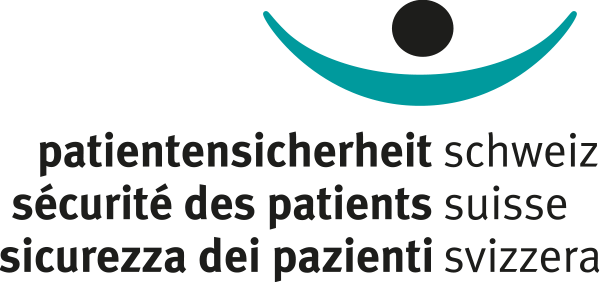
Osteoarthritis of the Hip and Implantation
Do you have any questions? Benefit from personal advice on second medical opinion and choice of hospital:
+41 41 228 09 94
Osteoarthritis of the hip is the most common hip disease. It usually appears between the ages 50 and 60. Osteoarthritis can emerge due to the wear and tear of the cartilage on the femoral head and the acetabulum, or can arise as a result of an injury to the hip joint, joint malposition, or inflammatory disease of the hip joint (such as rheumatoid arthritis).
Because of these possible causes, it is difficult to prevent the development of osteoarthritis of the hip. At most, its development can be postpone and its progression decelerated. The most effective measures are those that reduce stress and pressure on the hip joints:
-
Reducing overweight in the long term
-
Avoiding heavy physical work
-
Avoiding sports that overexert the joints
-
Using opportunities to practice sports and to exercise (alone or in a group) – this will do you good and will also promote holistic motion sequences. Find out about local offers and have a specialist instruct you.
-
If the occurrence of your hip pain is infrequent and temporary, pain relievers can help you stay mobile and avoid bad posture. Talk about it with your family doctor.
Your guide:
Your checklist:
Further information:
(Available in German, French and Italian)
+41 41 228 09 94
The number of people in Switzerland that have osteoarthritis of the hip is not known exactly. According to estimates, up to 20 % of people over 50 show visible signs of osteoarthritis of the hip on X-ray images, but only 5 % also have symptoms. Women are affected more often than men.
The way that osteoarthritis of the hip proceeds cannot be predicted with certainty. In a major study in the Netherlands, people with osteoarthritis of the hip were regularly examined for five years in order to observe the course of the disease. Of the participants of the study, about
-
40 % had mild pain of relatively constant intensity over the course of these five years;
-
20 % had moderate pain of likewise relatively constant intensity;
-
25 % had moderate pain that had become more severe over the course of these five years, and
-
15 % had severe, ongoing pain.
It is estimated that about three quarters of all people with osteoarthritis that is visible on an X-ray image develop little or no symptoms.
Conservatively (without an operation), osteoarthritis of the hips is treated by physio-therapeutic, diagnostic-therapeutic or medicinal-related measures.
For medicinal therapies, we recommend that you use generic medicines instead of original preparations: They are just as effective and will allow you to save money thanks to their lower retention fee. In order to find generics, use our search function. You can also ask your doctor or pharmacist.
Your guides:
Further information:
Individual health situation
Generic medicine: search function
(available in German, French and Italian)
If the osteoarthritis of the hip progresses further, this does not necessarily lead to increasingly severe symptoms, because the body works against the wear and tear on the hip joint. Wear and repair processes can compensate each other for many years.
But are your limitations and pain so great that an operation for a hip joint implant has been planned? Then undergo the procedure in the best of hands.
CONCORDIA has commissioned the institute B,B,S. Economic Consultants in Basel to evaluate the interventions for hip joint implants in all Swiss acute care hospitals – independently, neutrally, and according to statistical quality criteria.
The quality of inpatient treatment was assessed, along with the length of stay and the hospital costs.
-
During a personal conversation, we will show you, on the basis of the results, which hospitals throughout Switzerland have excelled over the years in the implantation of hip joints in terms of quality and efficiency.
-
Use our consulting offer to find out which hospital is most suitable for your treatment.
-
Naturally, you still have the choice of when and where you would like to be treated, in line with your basic and supplementary insurances.
Tips and recommendations for aftercare:
-
If you need long term walking aids, it may be worth buying them instead of renting them.
-
You can save on costs if you choose generics and purchase your medication via a mail order pharmacy. In addition, it is worthwhile to purchase larger packaging units for a long-term or permanent treatment.
-
Use our helpful guides if you find it difficult – due to poor eyesight, shaky hands, or forgetfulness, for example – to take your medications.
Do you need orthopaedic rehabilitation?
-
Rehabilitation can often be carried out on an outpatient instead of an inpatient basis.
-
Plan your appointments for outpatient physiotherapy so that you have enough time to go back and forth relaxed. Think about how best to get there, find out about public transport connections, or ask family members if they can drive you.
-
For inpatient rehabilitation: Check and compare – before entering the hospital – the various offers (e.g. therapies on weekends, pool, room comfort). Your doctor can request a confirmation of coverage with CONCORDIA already before your hospital admission. This way, you can transfer as seamlessly as possible from hospital to inpatient rehabilitation and cut down on waiting times.
Your guides:
Further information:
Give us your feedback: What experiences have you had with the CONCORDIA Health Compass? Do you have questions about using it?
What suggestions do you have for us? Or maybe you didn't find what you were looking for?
Call us on +41 41 228 09 94. Or write your message to healthcompass@concordia.ch.
We would be happy to provide further assistance.


